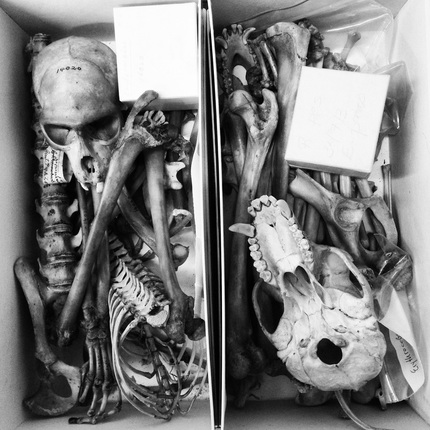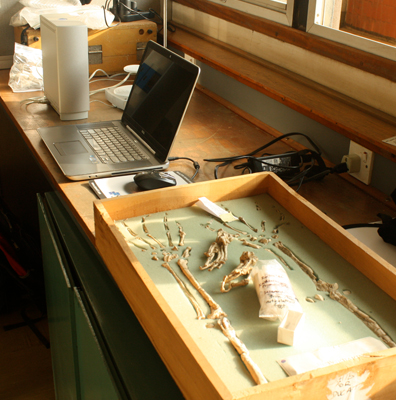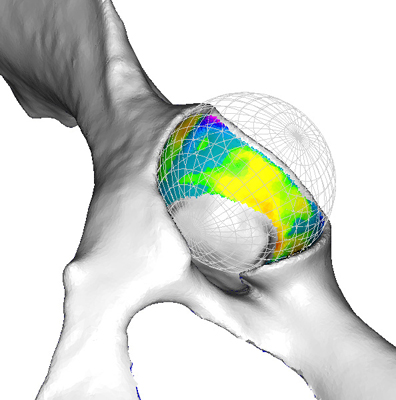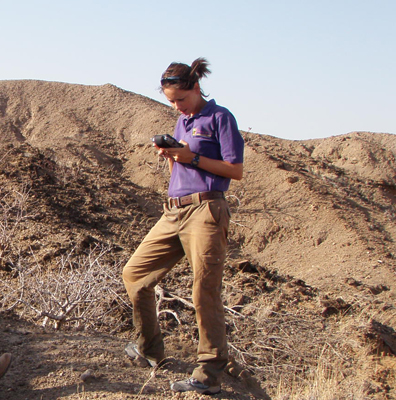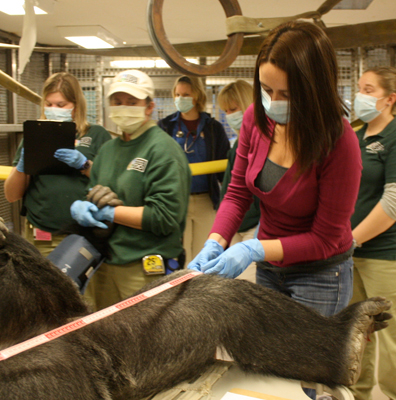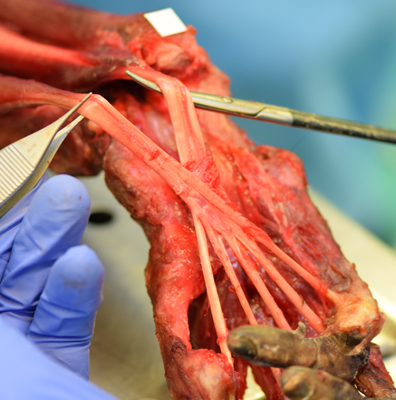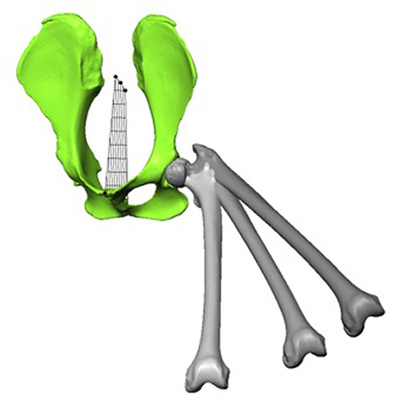|
My research seeks to reconstruct the evolution of fossil apes and humans, particularly as it relates to the evolution of locomotor behaviors.
I am currently working on reconstructing the evolution of pelvic shape in apes and humans, a large-scale project that is funded by the Leakey Foundation (2015-2016) and the Wenner-Gren Foundation (2016-2017). My study is quantifying phenotypic variation in pelvis shape across anthropoid primates, including newly available fossil pelves, using a 3D geometric morphometric approach. As the study moves forward, the expected pelvic shapes for different last common ancestors (LCAs), and considering different phylogenetic and evolutionary scenarios, will then be quantitatively reconstructed at internal nodes in the hominid tree and rendered using novel visualization approaches. This study will allow me to model and measure the amount and directionality of pelvic shape change within each lineage in order to evaluate claims for convergence in pelvic morphology in extant great apes. |
Another major on-going endeavor is also my long-term career objective: the discovery, description, and analysis of new fossil primates from East Africa. The Eastern African Rift System is the most important place in the world for understanding primate and human evolution. My research in the region has focused on the Omo-Turkana Basin (southern Ethiopia-northern Kenya), where I have worked since 2009, because it has primate-bearing deposits spanning the entire time period during which apes and hominins evolved (late Oligocene through the late Pleistocene). Continuing paleontological field research remains a fundamental priority for me.
Approaches
Traditional MorphometricsI use traditional quantitative techniques, such as calipers and microscribes, to characterize phenotypic variation in living and fossil primates.
|
Novel Morphometric TechniquesI have developed techniques for non-landmark based morphometrics (with Carol Ward and Mike Plavcan).
|
PaleontologyI am actively working at fossil sites in eastern Africa to address paleoanthropological questions.
|
Live Animal WorkI have in vivo hip joint mobility data for great apes, hylobatids, and Old and New World monkeys.
|
Extant Primate AnatomyI have dissected hip and gluteal regions for all of the great apes (except mountain gorillas), and have several on-going projects characterizing primate soft tissues.
|
Paleosimulations and VisualizationsI developed techniques for modeling joint mobility in primates. I use scanners (laser, structured light, CT and MRI) for anatomical visualizations.
|
